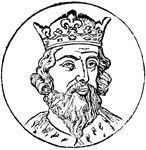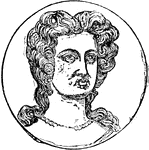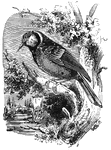Clipart tagged: ‘great’
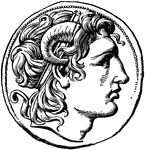
Coin of Alexander the Great
Alexander the Great's head on a silver coin of Lysimachus in 321-281 B.C.

Coin of Alexander the Great
"Coin of Alexander the Great. Alexander, at the time of his father's death, was in his twentieth year,…

Great auk, razor-bills, and puffins
A scene depicting a great auk, as well as razor-bills and puffins. The great auk is now extinct.
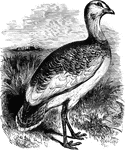
Great Bustard
Forty-five inches in length, the great bustard feeds on green wheat, grapes, trefoil, and other vegetable…
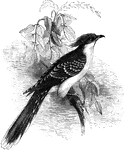
Great spotted cuckoo
The great spotted cuckoo divides its time between North Africa and Southern Europe, laying its eggs…
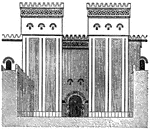
Facade
"Facade of the Great Hall of Columns of the Ptolemaic temple at Edfu." — The Encyclopedia Britannica,…

Great Forked-Beard
"One to two feet long, with a long barbule hanging from each chin." — Goodrich, 1859
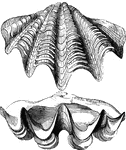
Shells of the great clam
"The Giant Clam, Tridacna gigas, is the largest of known shell-fish, the two valves sometimes…
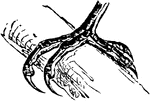
Foot of a Great Jacamar
The foot of a Great Jacamar, a bird belonging to the Scansores order. Scansores is an order of birds,…

Head of a Great Jacamar
The head of a Great Jacamar, a bird belonging to the Scansores order. Scansores is an order of birds,…
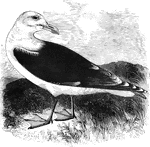
Great Black-Billed Gull
Feeding chiefly on fish, the great black-billed gull has been known to feed on small birds.
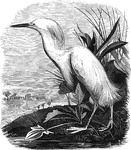
Great White Heron
White, often with a yellowish tinge, the great white heron of America closely resembles its European…
Great Nerve
"A Great Nerve (Posterior Tibial) on the Back of the Leg, with its Accompanying Artery of the Same Name."…

Great Nerve
"A Great Nerve (Plantar) and its Branches which supply the Bottom of the Feet. Note the cut tendons…

Eagle Owl
Eagle or great-horned owl, found in Europe and northern asia. It feeds on hares, rabbits, moles, mice,…

Great Short-Eared Owl
Genus ascalaphia, a large owl, native to southern Europe and northern parts of Egypt.
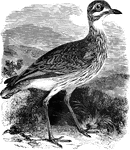
Great Plover
The great plover, also known as the thick-knee averages about seventeen inches in length and ranges…

Puffins, guillemots, the great northern diver, etc
A group of birds standing on a shore, with icebergs eveident in the background.

Great Shearwater
"The great shearwater reaches a length of eighteen inches, is white beneath, and is generally distributed…
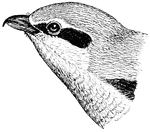
Great Grey Shrike
The Great Grey Shrike (Lanius excubitor) is a member of the shrike family. The Great Grey Shrike breeds…
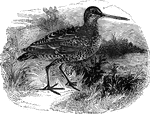
Double Snipe
The double snipe, also known as the solitary snipe and the great snipe, is found sparingly throughout…
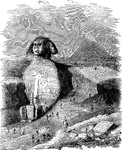
The Great Sphinx at Giza
A statue built on the Giza Plateau in Giza, Egypt, consisting of a lion with a human head. The Sphinx…

Telegraph Relay
"With a long main-line and many instruments in circuit, the resistance may be so great as to render…
Refracting Telescope
"Suppose the object o to be at such a distance, that the rays of light from it pass in parallel lines,…

Wirewalking Toy
Tightrope walking is the art of walking along a thin wire or rope, usually at a great height. One or…
Great Weaver
"It is about twelve inches long, lives in deep water, and is noted for inflicting serious wounds with…
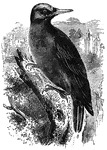
Great black Woodpecker
Chiefly making its habitat in Northern Europe, the great black woodpecker uses its long, sharp bill…
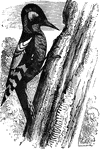
Great Spotted Woodpecker
The great spotted woodpecker measures an average of nine and a half inches long, and is found throughout…

Great Carolina Wren
The great Carolina wren, known for its ability to imitate various other songbirds.
